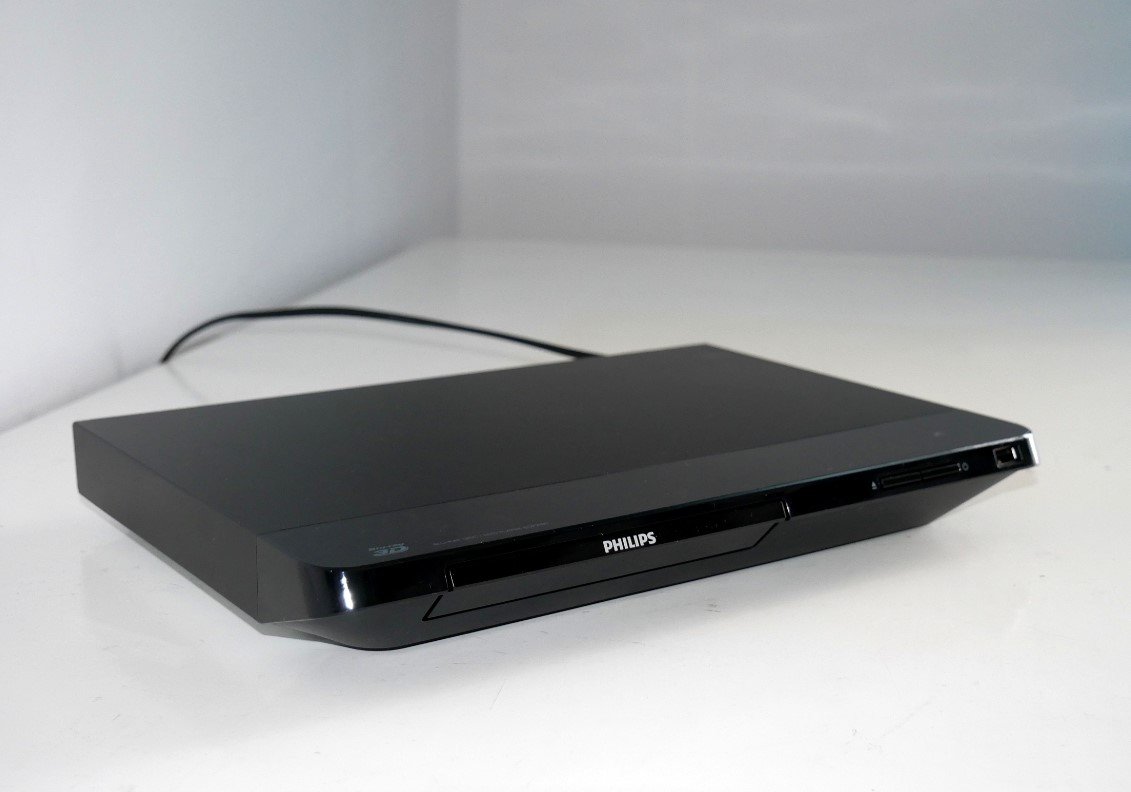Ever wondered if your shiny new Blu-ray player, capable of handling regular DVDs, can meet consumer demands? The burning question on many minds is whether this high-tech device is backward compatible with standard discs. Are you eager to unlock the potential of your Blu-ray player beyond just playing Blu-rays and DVD discs? Well, get ready for some exciting news! We’re diving into the world of compatibility and exploring whether your trusty Blu-ray player can step up to the challenge of handling those classic DVD favorites. Stay tuned as we unravel the mystery and discover if your entertainment system, including blu rays and 3d, can do more than you ever imagined.

Compatibility of Blu-ray Players with DVDs
Backward Compatibility
Blu-ray players are typically designed to be compatible with DVDs. Most Blu-ray players can effortlessly play regular DVDs and Blu-ray discs without any issues. This feature is known as backward compatibility, allowing users to enjoy their existing DVD collection on a Blu-ray player.
Playing regular DVDs on a Blu-ray player rw provides users with the convenience of having one device for multiple formats. Imagine being able to watch your favorite classic movies stored on standard DVDs using the same player that plays high-definition Blu-rays. It simplifies entertainment setups and reduces clutter from having multiple devices.
Enhanced Viewing Experience
While Blu-ray players can play regular DVDs and Blu-rays, it’s worth noting that they offer an enhanced viewing experience. The image quality and resolution provided by Blu-rays surpass those of traditional DVDs significantly. By upgrading to a Blu-ray disc, viewers can enjoy sharper images, more vibrant colors, immersive surround sound, and dvd discs.
Moreover, many modern Blu-ray players come equipped with advanced features such as 4K upscaling, HDR support, and streaming capabilities. These features enhance the overall viewing experience beyond what a standard DVD player, blu rays, or ultra hd blu can offer. Users get access to a wider range of content options, blu rays, ultra hd blu, and improved picture quality when utilizing these additional functionalities.
Understanding Disc Formats for Blu-ray Players
Various Supported Disc Formats
Blu-ray players are versatile devices that can play a variety of disc formats, including regular DVDs, CDs, and of course, Blu-ray discs. Each format offers different storage capacities and video resolutions. For example, while a standard DVD typically holds 4.7 GB of data with a resolution of 480p, a Blu-ray disc can store up to 25 GB or more with high-definition quality reaching 1080p or even 4K.
Understanding these differences in disc formats is crucial. Depending on your viewing preferences and the type of content you want to enjoy, selecting the appropriate format such as blu rays ensures an optimal viewing experience. Whether you’re watching classic movies on DVD or experiencing the latest blockbusters in stunning clarity on a Blu-ray disc, knowing which format suits your needs best is essential.
Importance of Knowing Disc Formats
Understanding how various disc formats like DVD discs, Blu-rays, and Ultra HD Blu work not only helps you make informed decisions when purchasing movies but also enables you to optimize your home entertainment setup. By recognizing the capabilities and limitations of blu rays, dvd discs, and ultra hd blu, you can tailor your viewing experience accordingly. For instance, if you have a collection of regular DVDs from years past that hold sentimental value, being aware that most Blu-ray players are backward compatible with these discs allows you to continue enjoying them without any issues.
Moreover, having knowledge about different disc drive compatibilities empowers you to explore additional features such as playing audio CDs or accessing interactive content like bonus features found on certain discs. This awareness opens up new possibilities for entertainment beyond just watching movies; it lets you delve deeper into the world of multimedia experiences available through your Blu-ray player.
Why Blu-ray Players Can Play Regular DVDs
Red Laser Technology
Blu-ray players can play regular DVDs because they utilize a red laser to read the discs, just like traditional DVD players. This red laser technology allows Blu-ray players to be backward compatible with standard DVDs, making them versatile devices for playing various disc formats.
Regular DVDs have a lower storage capacity compared to Blu-ray discs, but the red laser in Blu-ray players is designed to accurately read the data on these discs. The optical drive in a Blu-ray player is engineered to interpret and process the information stored on both DVD and Blu-ray discs efficiently.
Enhanced Compatibility
Manufacturers of Blu-ray players ensure compatibility by incorporating DVD playback capabilities into these devices. By integrating mechanisms that support reading regular DVDs alongside their primary function of playing high-definition Blu-ray content, manufacturers cater to users who still own or prefer watching standard-definition DVDs.
Enhancing Audio Experience in Blu-ray Players
High-Quality Audio Support
Blu-ray players are designed to support advanced audio formats like Dolby TrueHD and DTS-HD Master Audio. These formats offer superior sound quality compared to standard DVDs, providing a more immersive experience for viewers. By utilizing these codecs, Blu-ray players can deliver rich and detailed audio that complements the high-definition video.
Blu-ray players equipped with multichannel audio capabilities can decode and reproduce surround soundtracks accurately. This feature allows movie enthusiasts to enjoy blu rays as intended by filmmakers, with sound effects coming from different directions. Connecting a Blu-ray player to external speakers or a dedicated surround sound system further enhances the audio quality, creating a cinematic experience at home.
Immersive Sound Experience
The inclusion of advanced audio decoding technologies in Blu-ray players ensures that viewers receive an unparalleled listening experience. These technologies work seamlessly with compatible receivers and speakers to produce crystal-clear sound output. For instance, DTS-HD Master Audio decoding on Blu-ray players enables precise reproduction of sounds across multiple channels, making action sequences more dynamic and dialogue clearer.
Supports high-quality audio formats like Dolby TrueHD.
Multichannel audio capabilities enhance surround sound experiences.
Advanced audio decoding technologies provide immersive listening experiences.
Optimizing Picture Quality on Blu-ray Players
Superior Visual Experience
Blu-ray players excel in picture quality compared to regular DVD players. The high-definition video output options, such as 1080p resolution and blu rays, provide exceptionally clear and detailed visuals. When you watch movies or shows on a Blu-ray player, the images appear sharper and more vibrant than those played on standard DVDs.
Adjusting the display settings on your TV can further enhance the image quality of your Blu-ray player. By tweaking brightness, contrast, and color settings on both the TV and the player itself, including blu rays, you can optimize the picture to suit your preferences. These adjustments ensure that you enjoy a top-notch viewing experience with vivid colors and crisp details.
Optimizing Video Settings
To make the most out of your Blu-ray player’s capabilities, delve into its video settings menu. Here, you can fine-tune parameters like sharpness, noise reduction, and color balance for an enhanced viewing experience. By customizing these settings based on personal preferences or specific content being watched — whether it’s movies or photos — you can achieve unparalleled image clarity.
The Significance of Connectivity in Blu-ray Players
Various Connections Available
Blu-ray players offer various connections, including HDMI, USB, and Wi-Fi. These connections play a crucial role in enhancing the overall viewing experience. For instance, the HDMI connection ensures top-notch audio and video quality by allowing high-definition transmission between the player and TV.
Blu-ray players also feature USB ports, enabling users to access content from external storage media like flash drives or hard drives. This provides flexibility in playing different file formats without hassle. Furthermore, with advancements in technology, some modern Blu-ray players offer wireless connectivity options such as Wi-Fi, which opens up a world of possibilities for users.
Accessing Online Content
The inclusion of Wi-Fi connectivity allows Blu-ray players to connect to the internet wirelessly through your home network. This feature enables users to stream content from various online platforms directly on their TVs using the Blu-ray player as a gateway. By leveraging this capability, viewers can enjoy a wide range of entertainment options beyond just physical discs.
Moreover, Wi-Fi connectivity facilitates firmware updates for the player effortlessly over the internet. This ensures that your device stays up-to-date with the latest features and improvements without requiring manual intervention or additional accessories like memory cards or mobile devices.
Exceptions in DVD Compatibility with Blu-ray Players
Limited Compatibility
Some older or budget-friendly Blu-ray players may have limited DVD compatibility, which means they might not support all types of DVDs. These players might struggle to read certain formats, leading to playback issues.
Budget-friendly Blu-ray players often prioritize Blu-ray disc performance over DVD playback capabilities. This trade-off can result in a less robust system for playing regular DVDs, causing compatibility problems.
Regional Restrictions
Certain region-coded DVDs may not play on all Blu-ray players due to regional restrictions embedded in the discs. Each country is assigned a specific region code, and if your player does not match the region code of the DVD, it will not play.
It’s crucial to check the specifications of your Blu-ray player before attempting to play region-coded DVDs. Understanding the regions that your player supports can help you avoid purchasing DVDs that are incompatible with your device.
Steps to Play DVDs on Blu-ray Players
Insert DVD into the Disc Tray
To play a regular DVD on a Blu-ray player, start by inserting the DVD into the disc tray. Open the tray and place the DVD with its label facing up. Gently push it back in until you hear a click, indicating that it’s securely loaded.
Once you’ve inserted the disc, typically, your Blu-ray player will automatically recognize it and display options for playback on your screen. If not, use either the remote control or navigate through the on-screen menu to select the option that allows you to play DVDs.
Navigate and Select DVD Option
Using either the remote control or navigating through an intuitive on-screen menu, locate and choose the option specific to playing DVDs. This selection prompts your Blu-ray player to read and process data from your inserted disc.
After selecting the appropriate option, sit back as your Blu-ray player begins reading information from your regular DVD. The device decodes video and audio content stored on the disc so that you can enjoy watching it seamlessly.
Enjoy Watching Your Movie
Now that you’ve successfully loaded your regular DVD onto your Blu-ray player and selected its playback option, all that’s left is to enjoy watching what’s been recorded onto this classic format. Kick back as scenes unfold crisply on your connected TV screen or listen intently through an accompanying audio system.
Engage with familiar storylines or immerse yourself in new narratives brought to life by simply inserting a standard DVD into a modern-day Blu-ray player – bridging traditional entertainment formats with cutting-edge technology.
Troubleshooting Common DVD Playback Issues
Clean and Inspect DVDs
Make sure your DVD discs are clean and free from scratches or dirt. Dirt and scratches can hinder the playback process on your Blu-ray player, causing interruptions while watching movies. Regularly inspecting your DVDs can help maintain their quality.
Regular maintenance of your DVD collection is essential to ensure smooth dvd playback without any glitches. A simple wipe with a soft cloth before inserting the disc into the player can make a significant difference in how well it plays.
Firmware Updates and Support
Check for any available firmware updates for your Blu-ray player that may improve its compatibility with different video formats commonly used in DVDs. Updating the firmware ensures that your device stays up-to-date with current technologies, potentially resolving any playback issues you might encounter.
If you’re still experiencing problems after cleaning the disc and updating the firmware, consider resetting your Blu-ray player as a troubleshooting step. Resetting can sometimes resolve minor technical glitches that affect dvd playback, allowing you to enjoy uninterrupted movie viewing sessions.
Closing Thoughts
You’ve learned how Blu-ray players can be your DVD’s best friend, offering top-notch audio and picture quality. Understanding the compatibility and disc formats is key to maximizing your viewing experience. Remember, troubleshooting issues and ensuring connectivity are vital steps for seamless playback. So, dust off those DVDs and let your Blu-ray player work its magic!
In a world of evolving technology, embracing these tips can elevate your movie nights to a whole new level. Now that you’re armed with the knowledge, go ahead, pop in that DVD, and immerse yourself in a cinematic experience like never before!
Frequently Asked Questions
Can all Blu-ray players play regular DVDs?
Yes, most Blu-ray players are designed to be compatible with regular DVDs. They can play both Blu-ray discs and standard DVDs without any issues, offering versatility in your media playback options.
How do I play a regular DVD on a Blu-ray player?
Simply insert the DVD into the disc tray of your Blu-ray player with the label facing up. The player should automatically detect the DVD and start playing it. If not, you can navigate through the player’s menu to select the DVD option.
Are there any benefits to playing regular DVDs on a Blu-ray player?
Playing regular DVDs on a Blu-ray player can enhance your viewing experience by upscaling the video quality to near-HD levels. Some Blu-ray players offer advanced audio processing that can improve sound quality compared to traditional DVD players.
What should I do if my DVD is not playing correctly on my Blu-ray player?
If you encounter playback issues such as freezing or skipping when using a DVD on your Blu-ray player, try cleaning the disc surface for smudges or scratches. You can also check for any software updates for your player that may address compatibility issues.
Do all types of DVDs work with every model of Blu-ray player?
While most standard DVDs should work fine with any modern Blu-ray player, there might be exceptions for certain formats like region-locked discs or homemade recordings. It’s recommended to check your specific model’s user manual for detailed information on supported disc types.



















